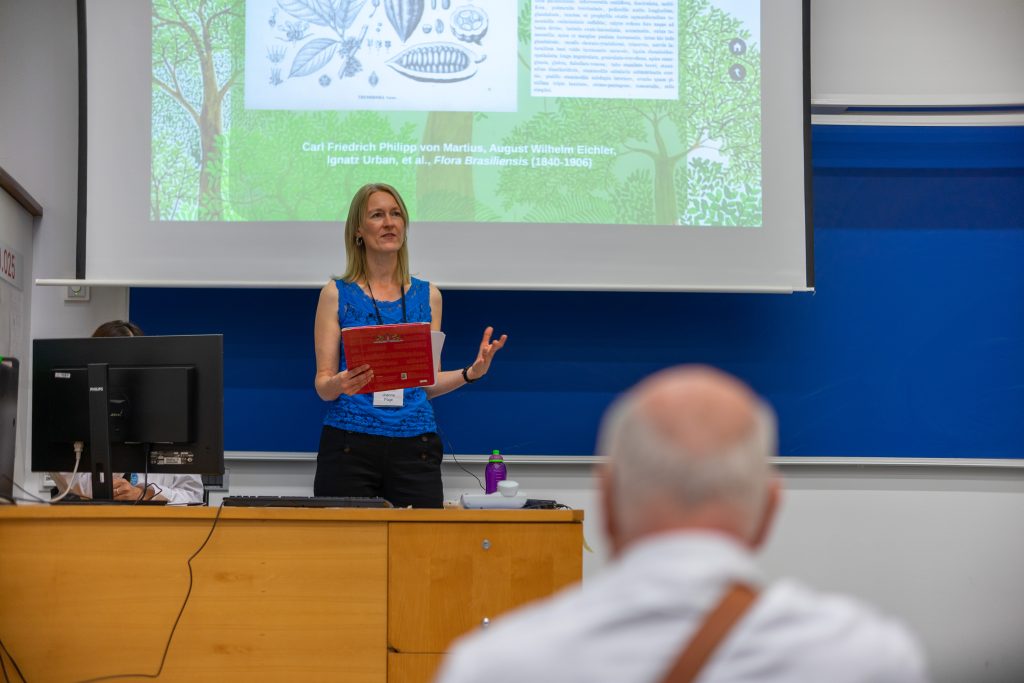This keynote lecture from Joanna Page was part of 2022 Humanities Fall Conference: Ciencia y Caridad.
Reported by Pauline Rogers, Class of 2025.

Professor Joanna Page is a professor at the Center of Latin American Studies at the University of Cambridge in the UK who focuses on literature, film, graphic fiction and visual arts from Latin America, focusing on Argentina, Chile, and Brazil. Many of her projects, including her most recent book, Decolonizing Science in Latin American Art, focus on the intersection between science and art. As the first guest speaker in the 2022 Fall Humanities Conference held in Barcelona, Professor Page brings us a lecture titled The Politics of Environmental Crisis: Perspectives from Latin American Art and Ecology.
Dr. Page opens her speech with three images of cacao trees. The first, from the 1500s, has a simple drawing of the cacao tree and a description of the uses of cacao which the artist learned from the local indigenous people. The second, from the 1800s, contains detailed botanical drawings of the cacao tree and a physical description to help to identify the tree, but notably lacks the uses of the plant detailed with the first image. The third, by a modern artist, Alberto Baraya, is an image of a plastic cacao pod and bright red plastic chocolate wrappers where further detailed drawings of the plant’s unique parts are usually expected in traditional botanical drawings.
Citing several scholars, Dr. Page explains how after the enlightenment in the 1800s, the Western world became set on a single objective form of knowledge and no longer attempted to incorporate potential contradictions from various local varieties. The second drawing’s loss of cacao’s uses illustrates how nature and culture were separated and an extractivist view of nature being for humans to exploit began to arise. The third drawing brings cacao back into the context of society by having chocolate wrappers which show cacao’s role in society, as well as a sensual drawing of an African lady on the wrapper, which hints at the history of slavery in growing cacao.
Dr. Page proceeds to introduce several more Latin American artworks, which like Baraya’s cacao image, bring nature back into the context of society. Another work by Baraya shows botanical images of artificial plants and flowers to show their context in society. An image by Eulalia de Valdenebro contained two rows of maize seeds where each seed on the top row was unique and each seed on the bottom row was identical, contrasting agroecology with agribusiness. Drawings of the Amazon rainforest by Abel Rodriguez show how the forest changes over time, including huts, mythical characters, and animals which connect the natural, spiritual, and cultural. Another work by Valdenebro shows the relative lengths of parts of a plant by placing sections of plants next to imprints of her body parts such as arms, legs, face, and hands in red ink, using nature to explain humanity and vice versa.
She closes her speech with quotes from Enrique Leff, Eduardo Gudynas, and Arturo Escobar to summarize her speech: using several Latin American projects and scholars to reconnect science with politics, ethics, and culture.